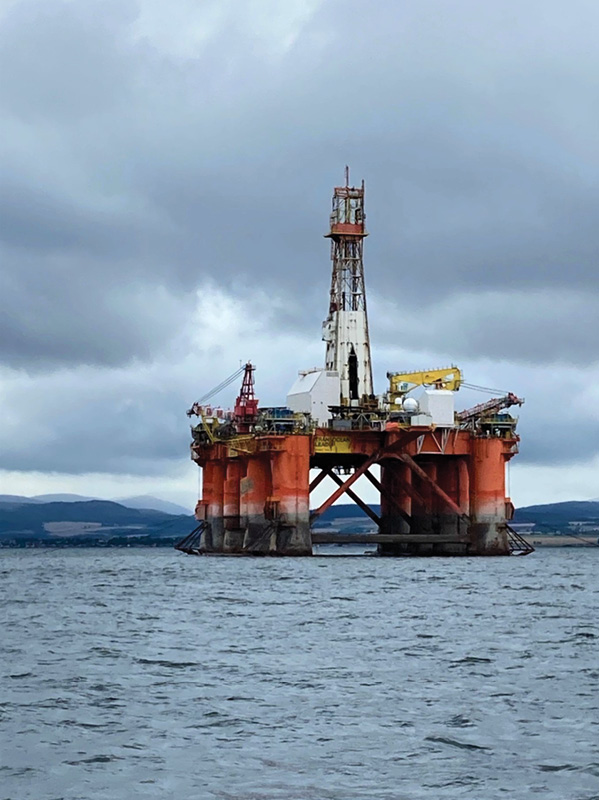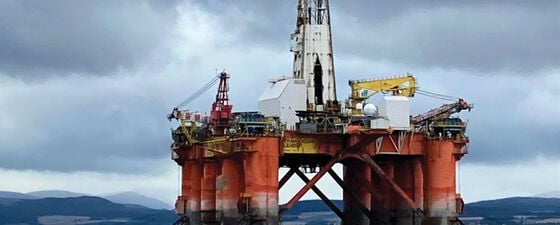 Parked oil platform viewed from Nigg Ferry. Credit: Nick Cottam.Take the Nigg Ferry in Scotland across to Cromarty and there is plenty of evidence of an industry in transition. As the ferry dips and rolls between Cromarty and Moray Firth, two giant platforms look down from their parking places. On the move though is a wind turbine service vessel, heading out of the port of Invergordon en route for the Moray East wind farm. Oil and gas still dominates in these parts, but offshore wind is the coming energy source.
Parked oil platform viewed from Nigg Ferry. Credit: Nick Cottam.Take the Nigg Ferry in Scotland across to Cromarty and there is plenty of evidence of an industry in transition. As the ferry dips and rolls between Cromarty and Moray Firth, two giant platforms look down from their parking places. On the move though is a wind turbine service vessel, heading out of the port of Invergordon en route for the Moray East wind farm. Oil and gas still dominates in these parts, but offshore wind is the coming energy source.
Small wonder then that oil and gas majors figure strongly among the 74 bids received for licences to develop a series of large floating wind farms off the coast of north-east Scotland. There are 15 seabed locations up for grabs and while wind power this far north in the UK is still a drop in the ocean, estimates suggest that this new generation of facilities could provide power for a quarter of the UK domestic market – or to put it more regionally, every home in Scotland.
Among those bidding in a leasing round, which could net the Scottish government up to £860 million, are Shell which has teamed up with Scottish Power, Eni, Total, Equinor and BP. The Italian supermajor Eni, for example, expects to deliver 60 GW of installed renewables capacity by 2050 and has hived off renewables into an ‘Energy Evolution’ business which it notes will produce a growing share of the company’s revenues. This is transition in practice for all the majors who eye up gas prospects before oil and see renewables as the medium and long-term route to transformation.
In the meantime – and alongside the ambition of Cromarty Firth as a future hub for offshore wind facilities – there is a continuing need for those fossil fuel revenues – in the short to medium term at least. While demand for oil has fallen off lately because of a rise of Covid cases in Asia, there are now signs of an uplift as infection rates abate, notes the International Energy Agency in its most recent monthly oil market report. While average demand fell to just under 91 million barrels a day last year, it is expected to increase by 5.2 million barrels this year and rise to just under 100 million barrels a day in 2022, back almost to pre-pandemic levels.
The upshot for Cromarty and Moray and deepwater ports around the world, is a highly competitive mixed bag of energy transition. Those Nigg-sighted platforms may not be parked for too much longer.




